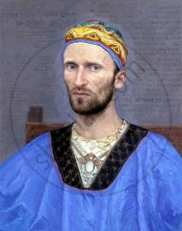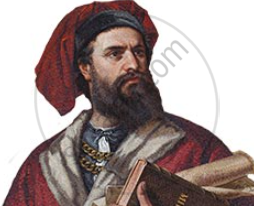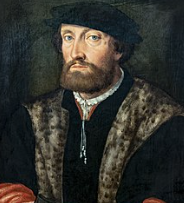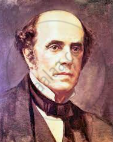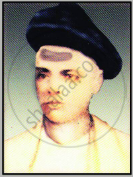Topics
Historiography : Development in the West
History : Applied History
Working of the Constitution
Historiography : Indian Tradition
The Electoral Process
Political Science : Working of the Indian Constitution
Applied History
Political Parties
History of Indian Arts
- What is ‘Art’?
- Indian Traditions of Visual Arts (Drik Kala): Painting
- Prehistoric Paintings
- Mural Paintings and Cave Painting
- Folk Styles of Paintings
- Classical Styles of Painting
- Miniature Paintings in Manuscripts
- Modern Indian Paintings
- Indian Traditions of Visual Arts (Drik Kala): Sculpture Art
- Indus Civilization Sculpture
- Folk Styles of Sculptural Art
- Classical Styles of Sculptural Art
- Indian Iconography
- Indian Traditions of Visual Arts (Drik Kala): Architecture and Sculpture
- Rock-cut Architecture
- Temple Architecture
- Indo-Islamic Architecture
- Indo-Gothic architecture
- Indian Traditions of Performing Arts
- Indian Theatre
- Indian Music
- Indian Dance
- Present Scenario of the Performing Arts
- Art, Applied Art, and Professional Opportunities
Social and Political Movements
- Movement
- Important Movements in India
- Tribal Movement
- Farmers Movement
- Worker's Movements
- Women’s Movement
- Environment Movements
- Consumer Movement
Mass Media and History
Challenges Faced by Indian Democracy
Entertainment and History
Sports and History
Tourism and History
Heritage Management
History - Imperialism
History - 20th Century Age of conflict
History - Emancipation of Asia and Africa
History - World after World War 2
Political Science
Geographical discoveries and colonization
- Concept for Geographical Discoveries and Colonization
Africa
- Imperialism - Africa
Asia: India, China, Japan
- Concept for Asia: India, China, Japan
Dictatorships in Europe, Second World War and world
- Concept on Dictatorships in Europe
- Concept for Second World War and World
First world war
- Concept on First World War
The League of Nations
- Concept for the League of Nations
Russian Revolution
- Concept for Russian Revolution
United Nations Organization
- Concept for United Nations Organization
Africa
- Emancipation of Africa
Asia
- Emancipation of Asia
Globalization
- Globalization After World War II
Scientific and Technological Progress
- Scientific and Technological Progress After World War II
Cold war
- Formation of the Cold War
Social Diversity and Democracy
- Social Diversity
- Coccept for Caste/Race and Democracy
- Concept for Language and Democracy
- Cocnept for Religion and Democracy
- Concept for Gender and Democracy
- Concept for Democracy and Diversity
Challenges to Democracy Remedial Measures to the Challenges
- Concept for Challenges to Democracy Remedial Measures to the Challenges
Internal work
Democracy
- Democracy - Meaning, Types and Characteristics
Political Parties and Types
- Political Parties
- Importance of Political Parties
- Major National and Regional Parties in India/ Types of Political Parties
Notes
Tourism:
Tourism is the act of travelling for a specific reason to locations in other countries. Tourism refers to enjoyment and adventure travel. It includes activities like camping and sightseeing. Tourists are people who travel for happiness. Resorts are frequently referred to be locations where plenty of visitors stay. Tourist destinations are locations where tourists travel to.
Tourism in the Past:
- In India, travel is a very old tradition.
- People used to travel for a variety of purposes, such as trade, pilgrimages, visits to local fairs and festivals, looking for a reputable teacher and a quality education, and so forth.
- In a nutshell, people have travelled since ancient times for a variety of reasons.
- According to Buddhist literature, Gautam Buddha travelled to several cities in ancient India to teach. Buddhism's monks were instructed to travel to many locations rather than to stay in one area. Sadhus and Jain monks used to travel a lot as well.
- Monk Yuan Shwang from China visited India around 630 CE.
- Saint Namdev, Guru Nanak, Ramdas Swami, and Eknath all made significant tours of India in the middle ages.
Travellers from Past |
|
|
Benjamin |
1. Benjamin (1130 - 1173):
|
|
Marco Polo |
2. Marco Polo (1254 - 1324):
|
|
Ibn Battuta |
3. Ibn Battuta (1304 - 1369):
|
|
Gerardus Mercator |
4. Gerardus Mercator (1512 - 1594):
|
|
Thomas cook |
5. Thomas cook:
|
|
Vishnubhat Godse |
6. Vishnubhat Godse:
|
If you would like to contribute notes or other learning material, please submit them using the button below.
Related QuestionsVIEW ALL [7]
Read the following extract and answer the questions:
| The tradition of travelling from corner to corner was prevalent in India from ancient times. Vishnubhat Godse wrote down the accounts of his journey from Maharashtra to Ayodhya and back to Maharashtra. It published a book entitled, 'Maza Pravas'. Vishnubhat travelled during times of the Indian War of Independence in 1857. He was the eyewitness for many events related to this historical event. His accounts are full of detailed descriptions of various incidences during this period, especially those about the life of Lakshmibai, the queen of Jhansi. We also get to know the nature of the Marathi language of the 18th century. This book is one of the important sources of the history of that period. |
- From where did Vishnubhat Godse travel and made an account?
(i) Maharashtra to Goa
(ii) Maharashtra to Ayodhya
(iii) Maharashtra to Delhi
(iv) Maharashtra to Madras - The accounts of Vishnubhat Godse gave information about which language?
(i) Marathi
(ii) Pali
(iii) Hindi
(iv) Konkani - Did travel during ancient times help to record historic events? Justify
